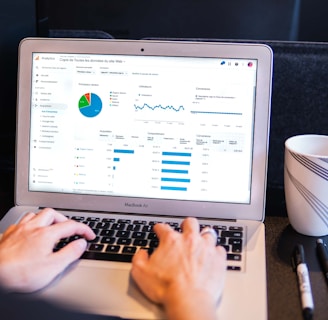Download your FREE Magnetic Magic guide!
Turbo Charging Your Web Traffic
Using internal links within your own website can do great things for your SEO.
4/18/20252 min read


I know the story. You wanted to start an online business, so you researched the best web and domain hosts, you built out your website, started posting to social media, and waited for the rush of traffic while preparing for the onslaught of orders. But then a week goes by, and your results are between dismal and abysmal. Before you pay someone a bunch of money you don't have to improve your SEO, try this first: Leverage the power of internal links. What's that, you wonder? Read on - we'll explore how internal linking can significantly boost your website's SEO and provide examples to guide you through the process.
Understanding Internal Links:
Internal links are hyperlinks that connect one page of your website to another. These links play a crucial role in enhancing the user experience, guiding visitors to relevant content, and distributing the website's authority or "link juice." From an SEO perspective, internal links help search engines understand the structure of your site, establish the hierarchy of your content, and determine the relevance of each page.
Benefits of Internal Linking for SEO:
Improved Crawling and Indexing: Internal links create a logical pathway for search engine crawlers to navigate through your website. By linking to important pages, you ensure that search engines discover and index all relevant content efficiently.
Example: If you have a product page, consider linking to it from your homepage, category pages, and other related blog posts.
Enhanced Page Authority: Internal links distribute the authority of high-ranking pages to others within your site. By strategically linking to important pages, you can pass on the SEO value and help boost the overall authority of your website.
Example: If you have a well-performing blog post, link to it from other relevant blog posts or pages to share its authority.
Reduced Bounce Rate: Internal links keep users engaged by providing additional information or related content. By reducing bounce rates, search engines interpret this as a positive signal, potentially improving your website's rankings.
Example: Include "Related Articles" or "You May Also Like" sections with internal links at the end of your blog posts.
Keyword Optimization: Internal linking allows you to anchor relevant keywords to specific pages, signaling to search engines the content's subject matter and improving your chances of ranking for those keywords.
Example: If you're a local business, use internal links with location-specific anchor text, like "best bakery in [your city]," pointing to your bakery page.
Enhanced User Experience: Internal links guide visitors to more information, creating a seamless and informative user experience. Satisfied users are more likely to stay on your site, reducing bounce rates and improving your overall SEO.
Example: Include a "Learn More" link within your service pages, directing users to in-depth articles or case studies related to your offerings.
Conclusion:
For anyone striving to improve their website's SEO on a budget, internal linking is a powerful and accessible strategy. By strategically implementing internal links, you can enhance the visibility of your pages, improve crawling and indexing, and create a better user experience – all contributing to higher search engine rankings. Take the time to review your site's structure, identify key pages, and start weaving internal links to unlock the full potential of your website's SEO.
Related Articles: Crafting Your Path to Success: 5 of the Best Ways to Optimize Your Landing Page for Lead Generation
This site contains affiliate links, which means that I may make a small commission - at NO cost to you - if you make a purchase using one of the links.
